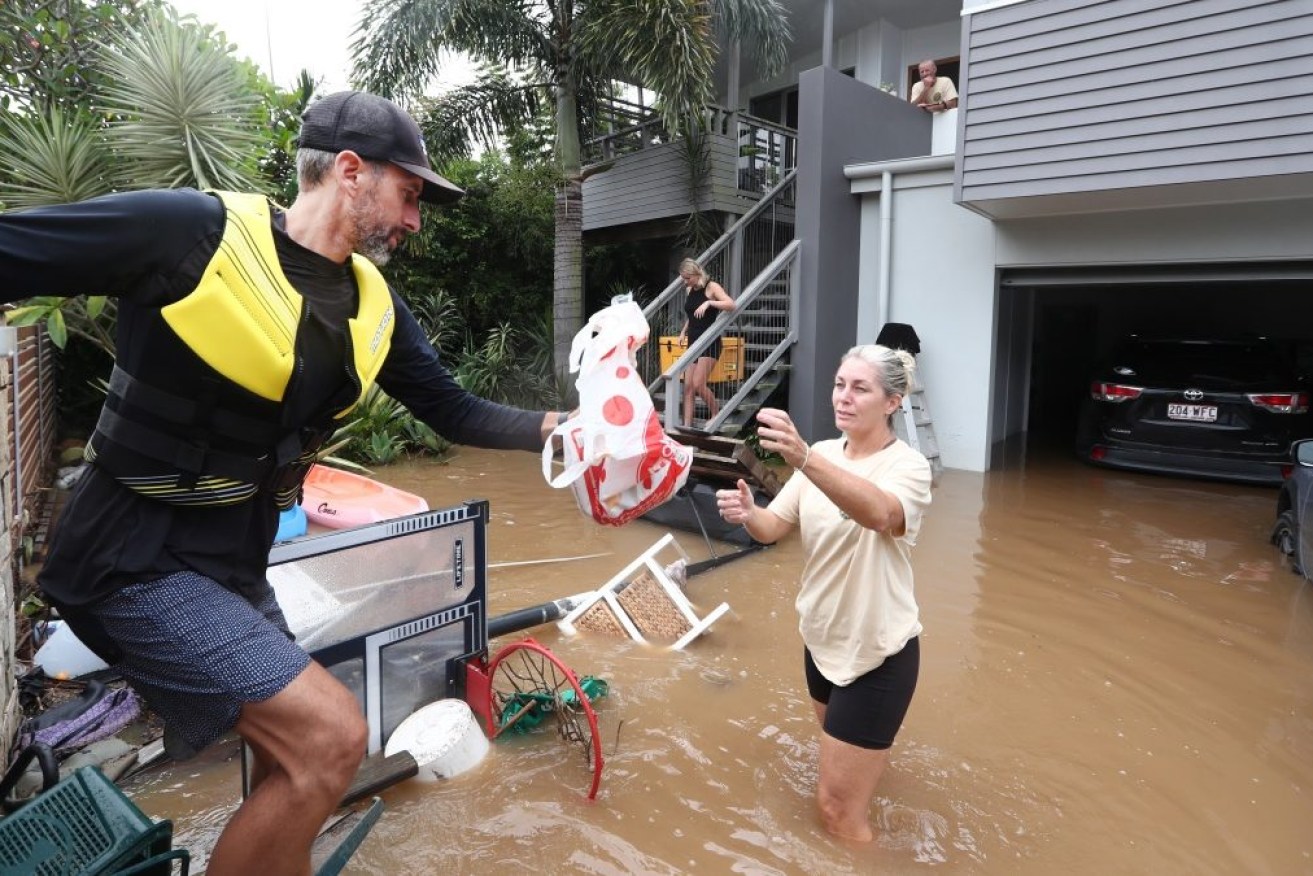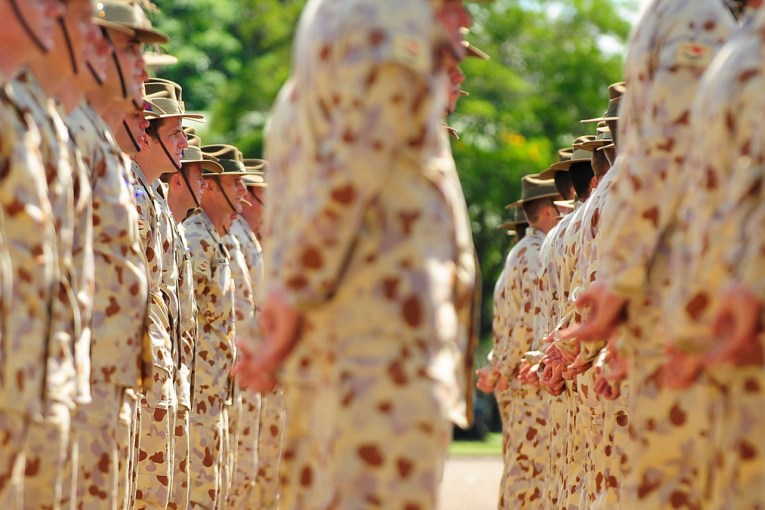NSW floods ease, but too late for six victims who lost their lives


Accommodation in housing pods is the stopgap solution until flood-ravaged NSW towns rebuild. Photo: AAP
The death toll from the NSW floods has risen to six after the body of a man aged in his forties was found south of Murwillumbah in the state’s north.
Police say the body was found shortly after 2pm on Friday at Byrril Creek Road near Terragon and had yet to be formally identified.
Four other fatalities occurred in flood-ravaged Lismore in recent days and a man died when his car was swept away by floodwaters on the Central Coast last week.
Floodwaters are easing but the state is not out of danger yet as attention turns to the recovery effort ahead of more bad weather forecast for the weekend.
For Shane Earl, a caravan park owner in Sackville on the Hawkesbury River, this week’s floods are an all too familiar scene of devastation.
“This is our third flood but what can you do … you get on with it, ” he told AAP by phone while observing his submerged business.
Blow after blow
It was only a few months ago that he was fixing the damage caused at his uninsured park from last year’s flood, which he estimated to have set him back at least $200,000.
Mr Earl said he saw the early warning signs of the deluge and squarely blamed Resilience NSW, a state body tasked with disaster management, for not doing enough to mitigate damage before the inundation.
“Resilience NSW said they would come up with a plan to restabilise the banks but it was a bald faced lie. It never happened,” he told AAP.
Other flood-devastated communities, such as Lismore and Ballina in the state’s north, could also be hit with more wet weather in the coming days.
More than 280 Australian Defence Force members are being deployed to support the clean-up, working alongside about 600 police and emergency crew members.
Premier Dominic Perrottet said the state has a mammoth task ahead and “it is vital we get boots on the ground to begin the immense recovery process”.
Emergency Services and Resilience Minister Steph Cooke will also take up the role of Flood Recovery Minister.
Ms Cooke said communities “have been through a hell of a lot” and she is “determined to make sure every person gets back on their feet as quickly as possible”.
Part of that will involve finding accommodation for people who have lost their homes in the floods. The government will use “a range of different measures” to do that, the Premier said.
Amid criticism of the response and preparation for the floods, Mr Perrottet said the government has been “completely focused” on getting responders into flood hit areas, but they have to take advice about when it is safe to do so.
‘Do everything we can’
He said the government is “going to do everything we can to get people back on their feet”, but it’s going to be tough, and he expects there will be mistakes made during the “substantial task”.
Those will come on top of mistakes and shortfalls already made in the lead-up to the disaster that left residents stranded on roofs and towns isolated – the details of which will emerge as the government reviews and reflects on the disaster in the coming months.
“Our focus right now is not on playing the blame game,” Mr Perrottet said.
After the government has a chance to reflect on the disaster he will “resource every level of government to a level that will provide protection to the people of our state”.
While the Premier has focused on the recovery he acknowledged the disaster is not yet over.
NSW SES Commissioner Carlene York gave a similar warning.
“We are not past the danger period yet. The rivers are very high, fast-flowing,” NSW SES Commissioner Carlene York said.
Over the next four days parts of NSW could see up to 100mm of rain and parts of the Hunter up to 150mm with severe thunderstorms, heavy rains and damaging winds forecast, said the BoM.
The estimated current cost of claims across Queensland and NSW is now just over $1 billion, the Insurance Council of Australia said on Friday.
Emergency Management Minister Bridget McKenzie says the flood damage bill is expected to enter the billions of dollars as stories of devastating losses continue to surface.
Farmers are unable to access dairy cattle, which need to be milked regularly, and many animals will need to be euthanised and their carcasses disposed of in a safe manner.
“Beyond the dairy industry, we heard from food processors (where floods) shut down 10 meat processing works which actually process a third to a quarter of Australia’s red meat,” Senator McKenzie said on Friday.
“Seven thousand people are employed in these 10 facilities that have been impacted by the floods so that is a significant concern.”
ADF personnel working overtime
Flood-stricken communities across Queensland and NSW are being assisted by more than 2000 defence force personnel who will also take part in clean-up efforts.
Defence Minister Peter Dutton confirmed 103 people had been rescued by ADF helicopters since the flood crisis began.
But personnel are stretched over a geographically huge area spanning the southeast corner of Queensland and down the east coast toward western Sydney, he said.
“The effort on the ground is frustrated in some areas because it is inaccessible even to the ADF with their vehicles to get in and start the clean up,” Mr Dutton told the Nine Network on Friday.
“There is a sense of reassurance when the ADF rolls into those streets, and they know that … they understand the gravity they bring to a local area to boost spirits and to help people get back on their feet.”
Large parts of Queensland and NSW remain underwater after heavy rain and flash flooding over the preceding days.
Southeast Queensland remains on alert for life-threatening floods from dangerous thunderstorms after deluges killed nine people and damaged more than 17,000 properties in the state.
In NSW, Greater Sydney, the Central Coast, South Coast and the Hunter region also remain on alert for more flooding.
The clean up continues on the state’s north coast in cities including Lismore, which was hit by the region’s worst floods on record.
Shortages of critical supplies such as food, fuel and fresh water also continue as the first essential food and water supply drop arrived in the Lismore area on Friday.
The National Farmers Federation chief executive says the priority must be restoring access to flood-stricken communities, not only so people can return to their homes and take care of their livestock, but so essential supplies can enter as well.
$435 million support package
“Roads, infrastructure must be the immediate priority so that people can get into those communities, get the food and fibre into the supply chains so it can get on supermarket shelves,” Tony Mahar said.
“We need skills. We simply have to have the resources, we have to have people in those communities that are going to help recover, help manage and help build back better.”
The financial sector is also working with federal authorities on ensuring access to cash, money and income when communications and electricity are down.
The Commonwealth is working with Queensland to deliver further support to flood-affected areas, asking the state government for a list of projects where funding is required to rebuild.
It comes as the federal government announced a joint $435 million support package with NSW on Thursday, with a second package in the works.
The package includes grants of up to $75,000 for primary producers and up to $50,000 for small businesses and not-for-profit organisations.
-with AAP








